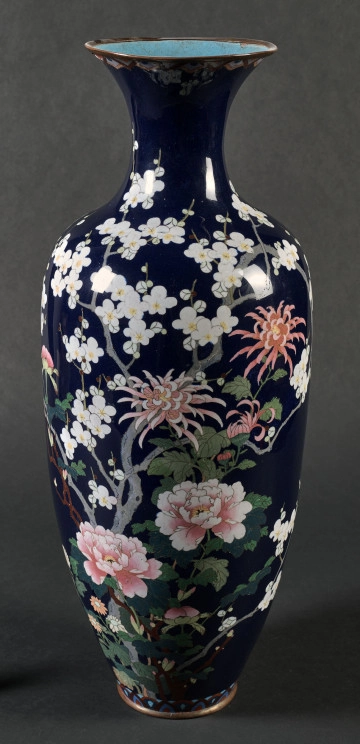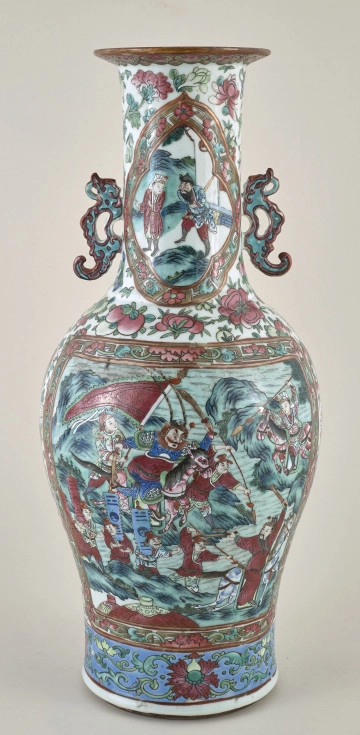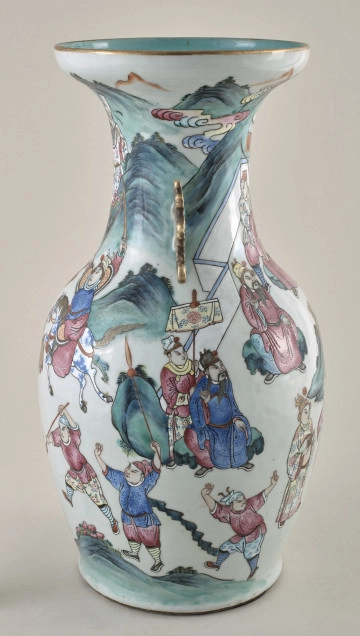
Vase
19th (?) century
Castle Museum in Łańcut
Part of the collection: Orient
Vase made of thick porcelain. The bottom is round and slightly thick, the belly is ovoid (egg-shaped), the neck is elongated, ending in a rim similar to an overlaid bowl. Two handles on the neck in the shape of stylized dragons, red-gold. Decoration on a white background in the "familie rose" color scheme - flowers, fruits, butterflies and scenes from legends from the "Six Dynasties" period (3rd-4th century). Turquoise-green interior. The term "pink family" porcelain, or famille rose, was coined by Albert Jacquemart in the 19th century and it is not analogous to the Chinese professional term for decoration technology. The term used in China is fencai, translated as "powder colors" or yangcai - "foreign colors". The pink enamel used came from a gold colloid discovered around 1670 and was imported to China around 1720. The more general term falangcai "enamel colors" or ruancai "soft colors" was also in use. Famille rose type decoration began to be used in late 1720s. The best examples of this type of porcelain come from Yongzheng period (1723-1735). At the end of the Kangxi period pink color began to be used for painting flower petals on porcelain. This decoration became so popular in Europe that during the Rococo period, porcelain of this type was frequently imported to our continent. Porcelain, enamel paints on a glaze. China, export ware to Europe, 19th/20th century.
Author / creator
Dimensions
height: 62.5 cm, width: 21 cm
Object type
Orient
Technique
painting, ceramic
Material
paint, porcelain
Creation time / dating
Creation / finding place
Owner
Castle Museum in Łańcut
Identification number
Location / status

19th (?) century
Castle Museum in Łańcut

19th / 20th century
Castle Museum in Łańcut

19th / 20th century
Castle Museum in Łańcut
DISCOVER this TOPIC
National Museum in Lublin
DISCOVER this PATH
Educational path